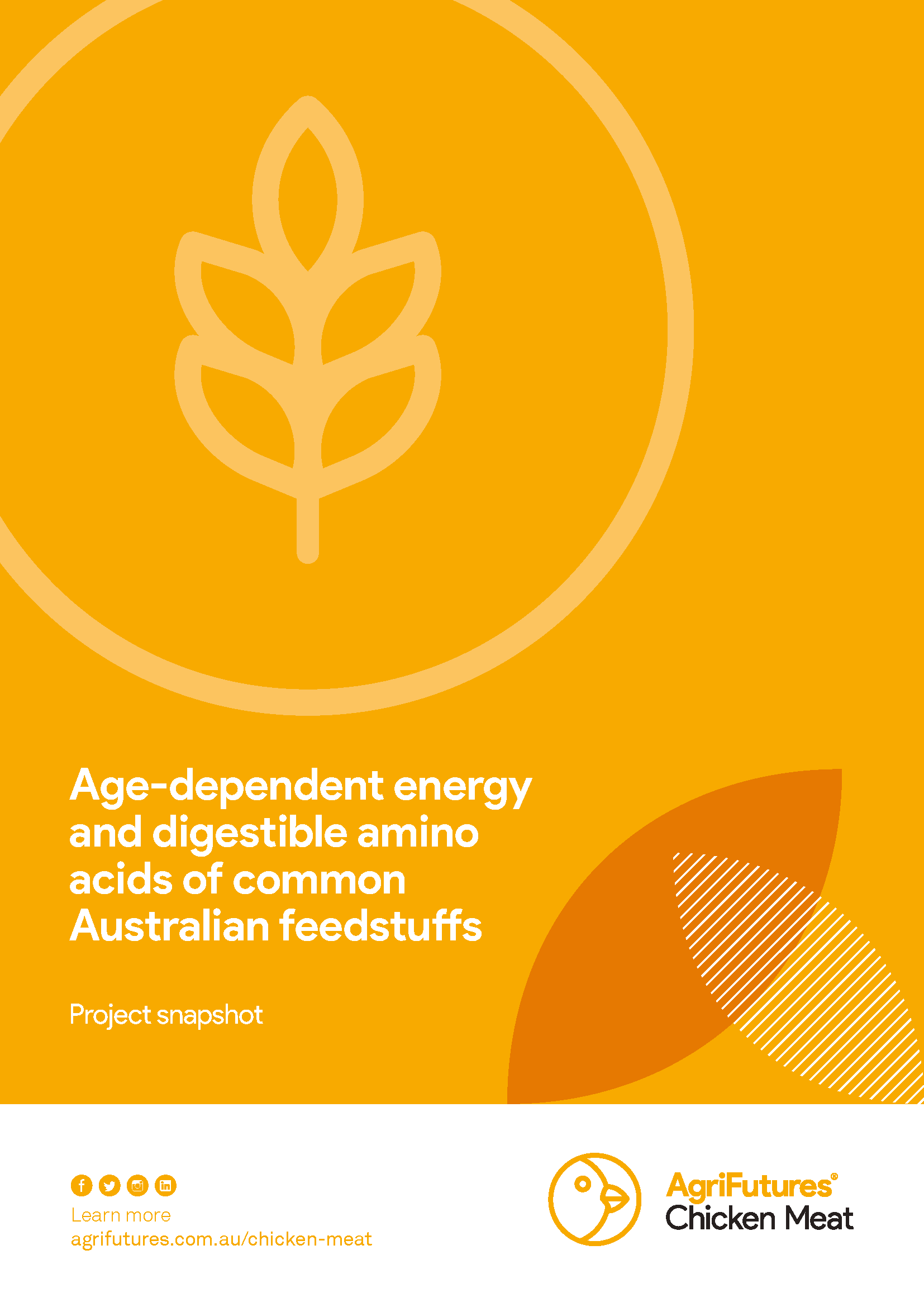AgriFutures Chicken Meat Program RD&E Snapshot
As we head into a new research, development and extension (RD&E) period for the Australian chicken meat industry (2022–2027), it is timely to reflect on...
 CHICKEN MEAT
CHICKEN MEAT 
6 pages
Published: 15 Jun 2023
Author(s): M Reza Abdollahi
Download report PDF
DownloadThe age of broilers has a significant effect on how well they digest and absorb energy-yielding nutrients and amino acids (AA). The capacity of the digestive tract to digest and absorb nutrients is limited during the early life of broilers and there is consensus that nutrient digestibility generally increases with age. However, most published data on the apparent metabolisable energy (AME) and digestibility of AA in feed ingredients have been generated with either adult cockerels or older broilers (typically five weeks old), and are widely used in feed formulations for all phases of broiler growth. The relevance of using a single value of AME and digestible AA obtained with older birds for all growth phases of broilers, especially their early life, is questionable and highlights the need for age-dependent estimates for use in feed formulations.
This project included eight feeding studies to determine the endogenous energy and AA losses at different ages of broilers, investigating age-related AME and AA digestibility of four cereals (wheat, sorghum, maize and barley) and three protein sources (soybean meal, solvent-extracted canola meal, and meat and bone meal) commonly used in the Australian chicken meat industry. This research, for the first time, provides information on the AME and digestible AA content in common feed ingredients from hatch to the end of the broiler growth cycle. The findings suggest bird age influences AME and AA digestibility of feed ingredients, and the effect varies and depends on the feed ingredient, assay methodology and specific AA. It is concluded the precision of feed formulations can be improved by using age-specific AME and digestible AA values.